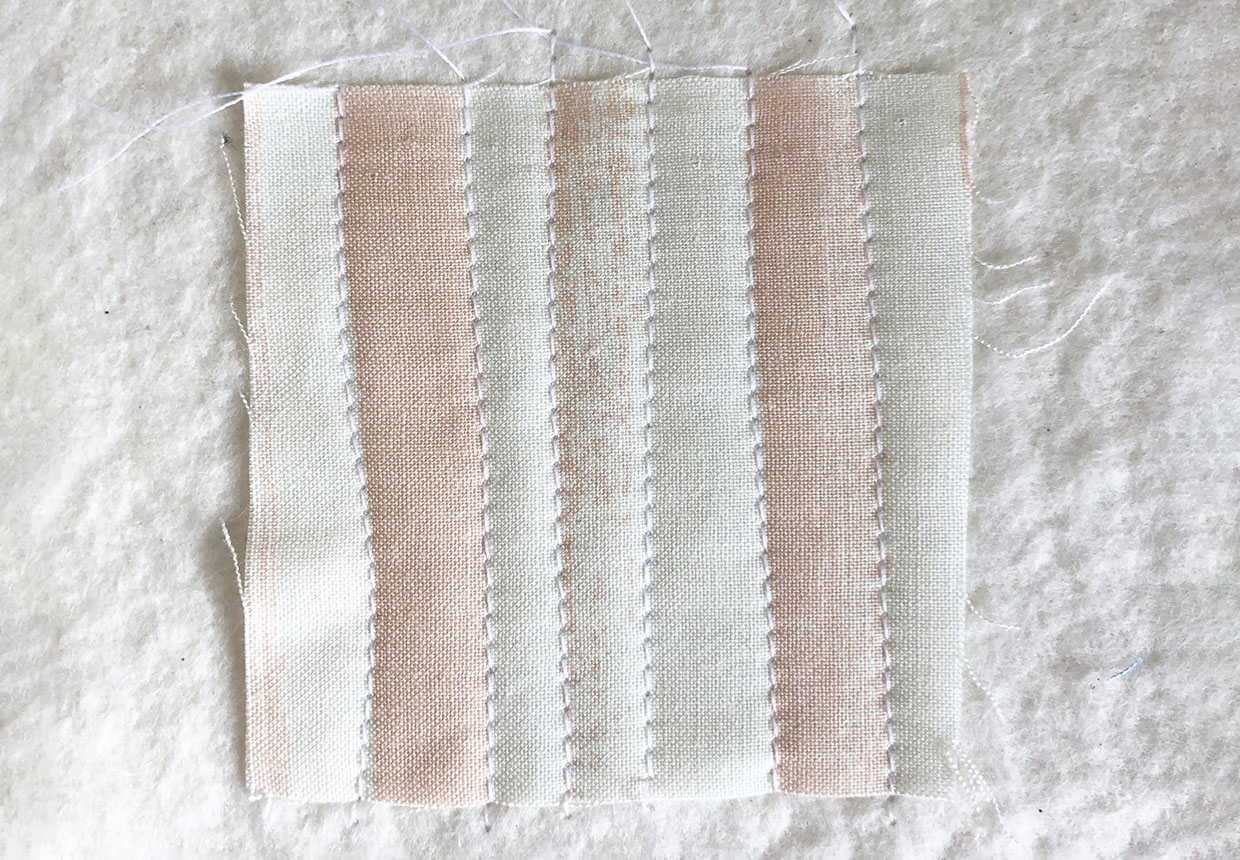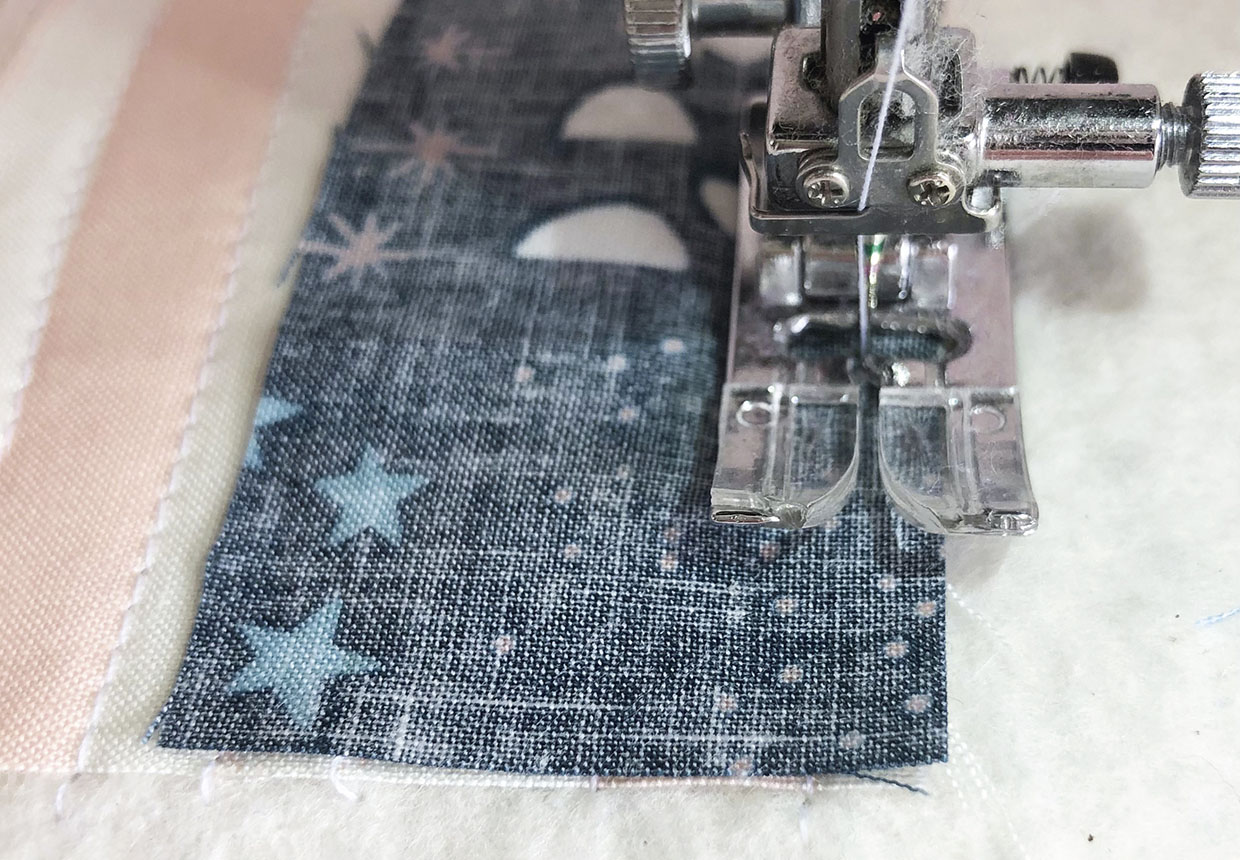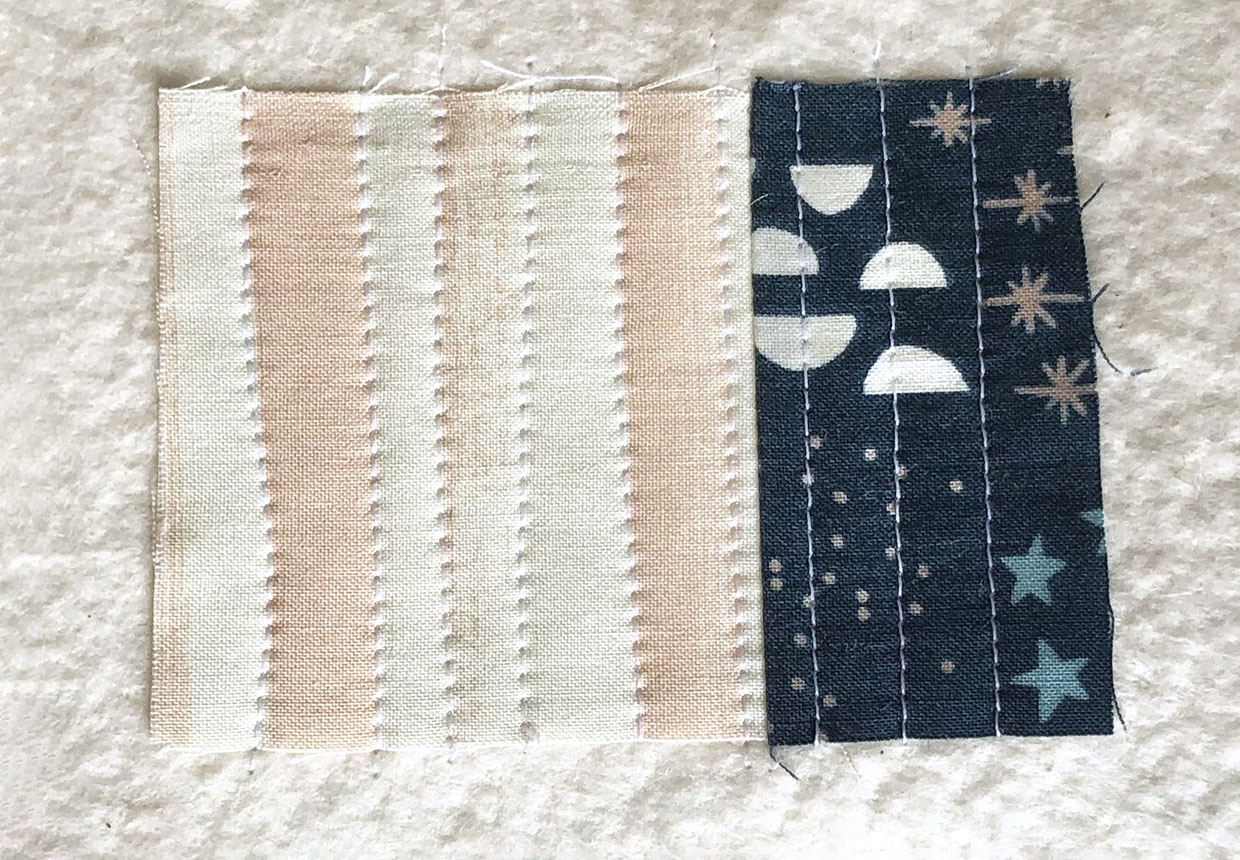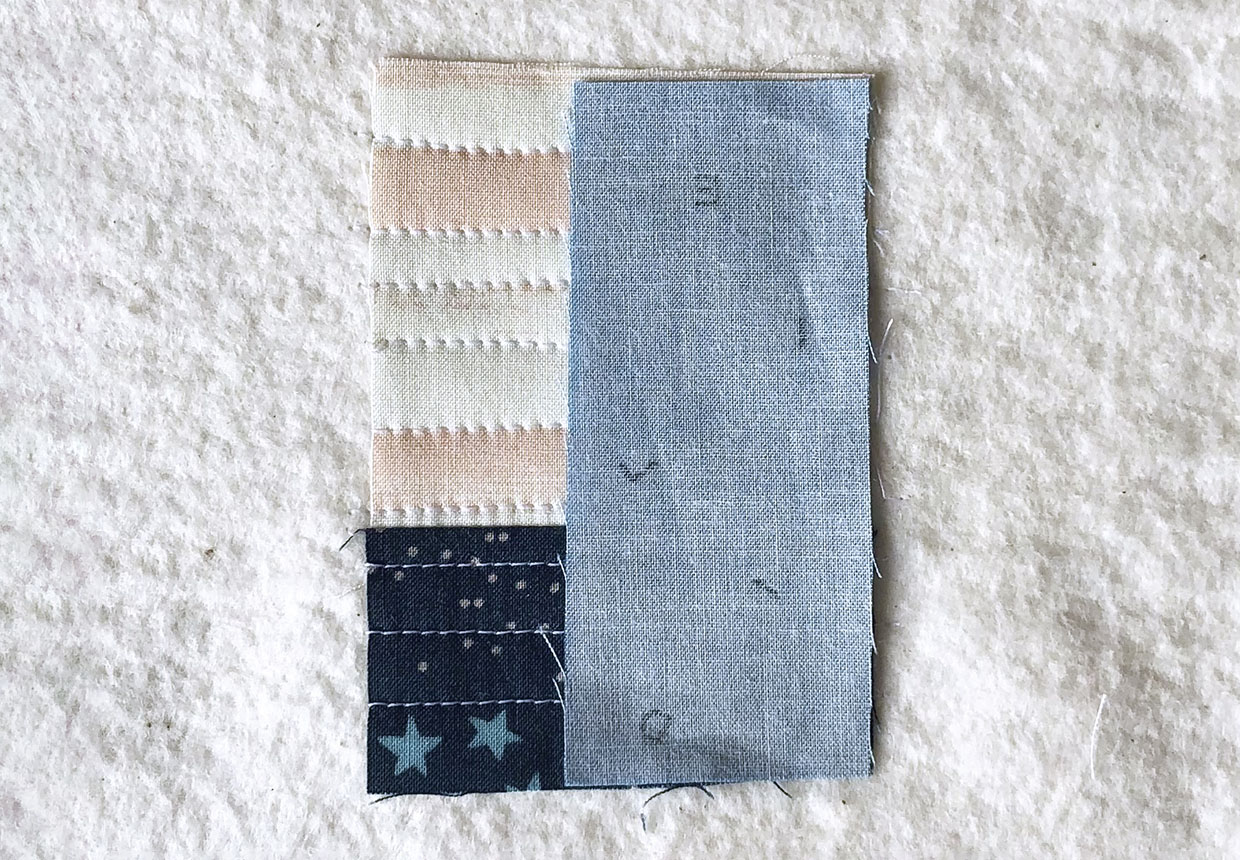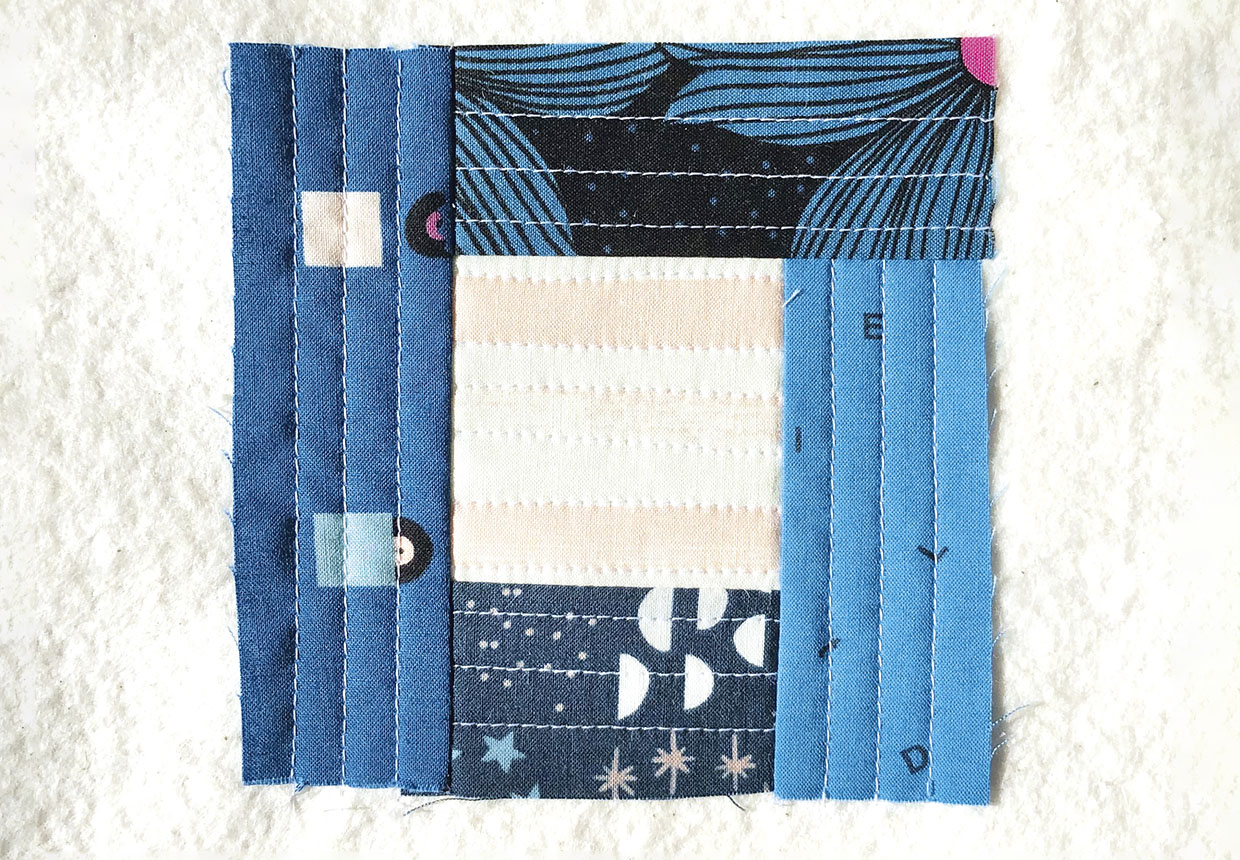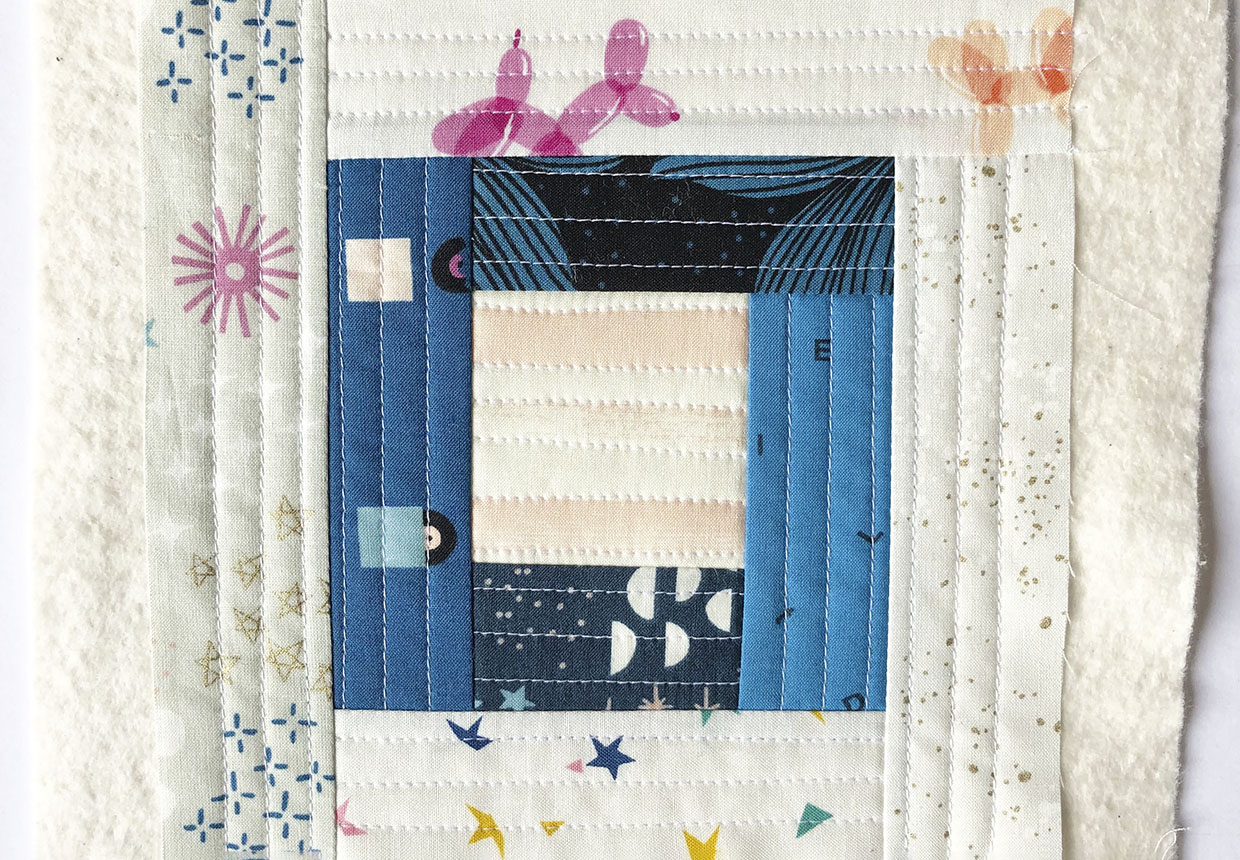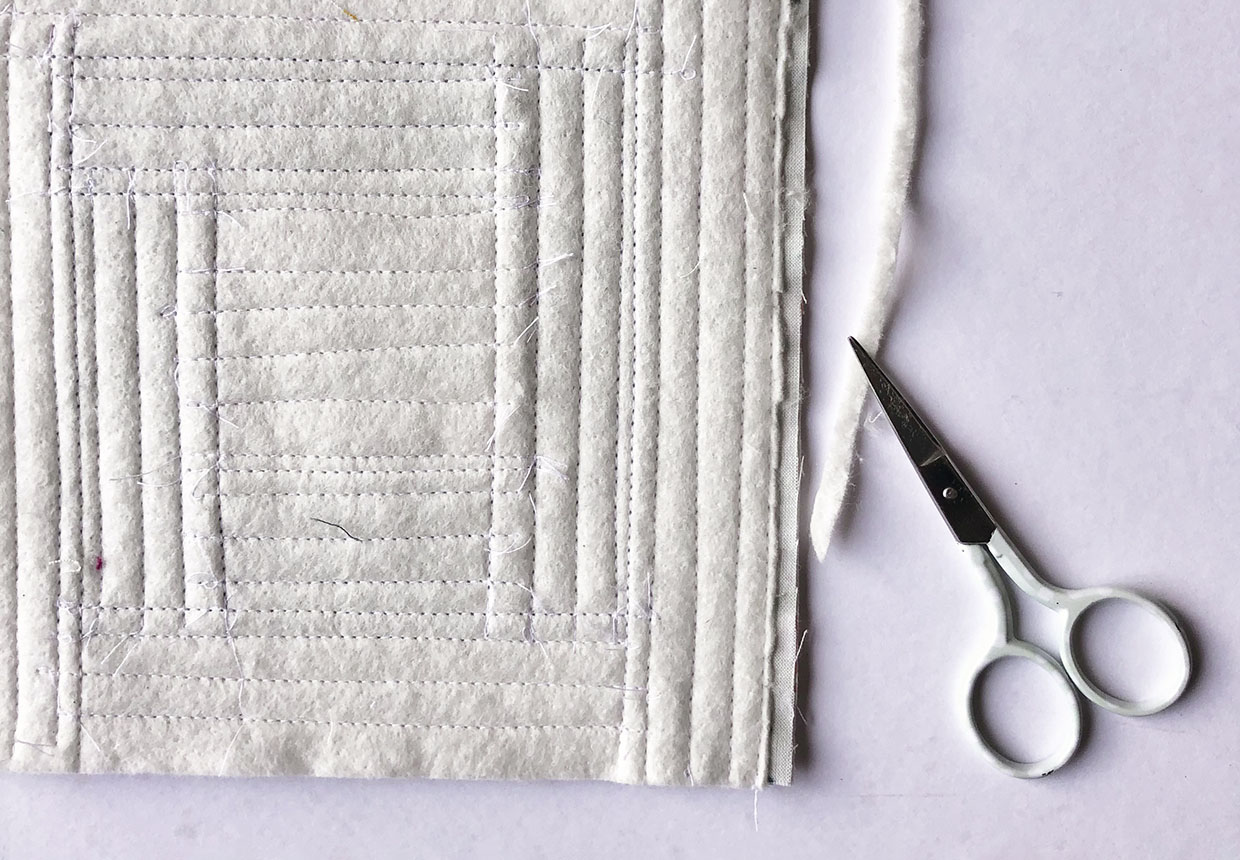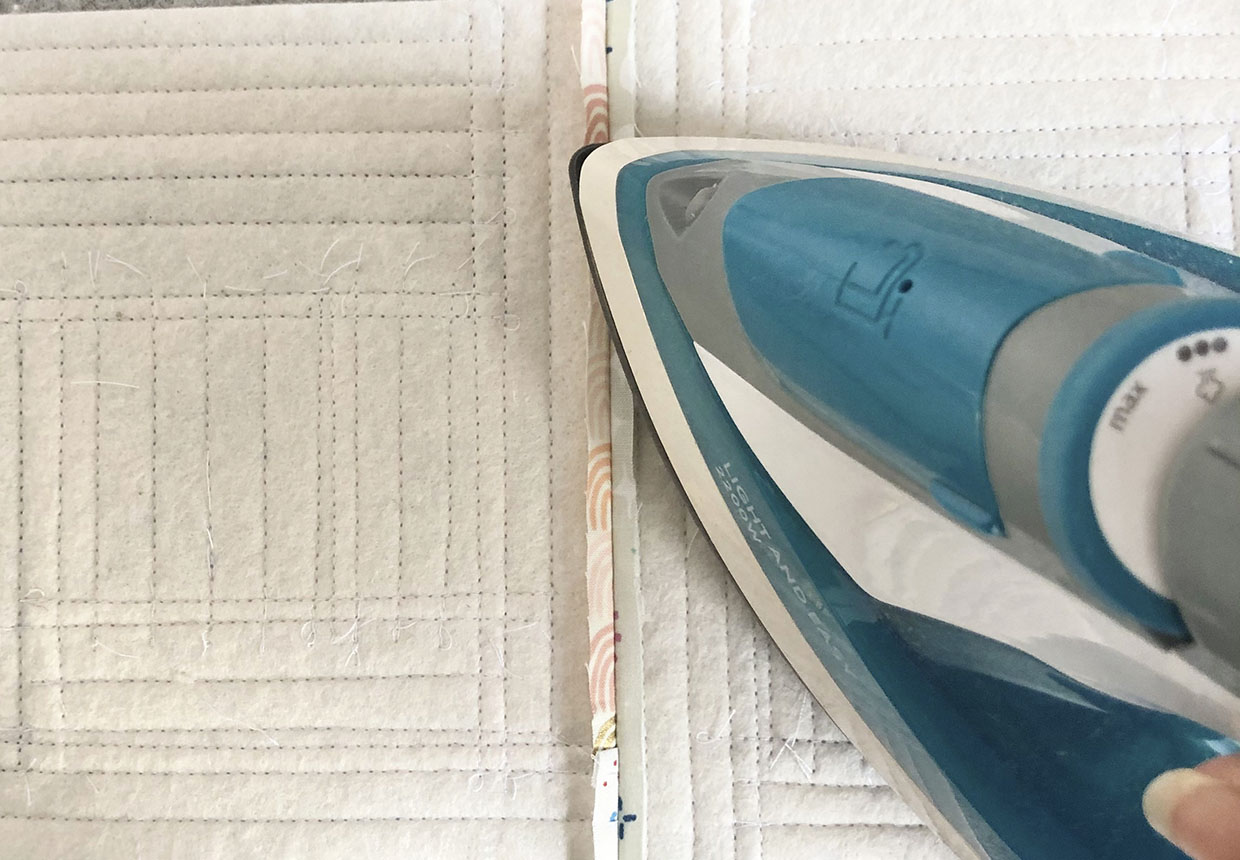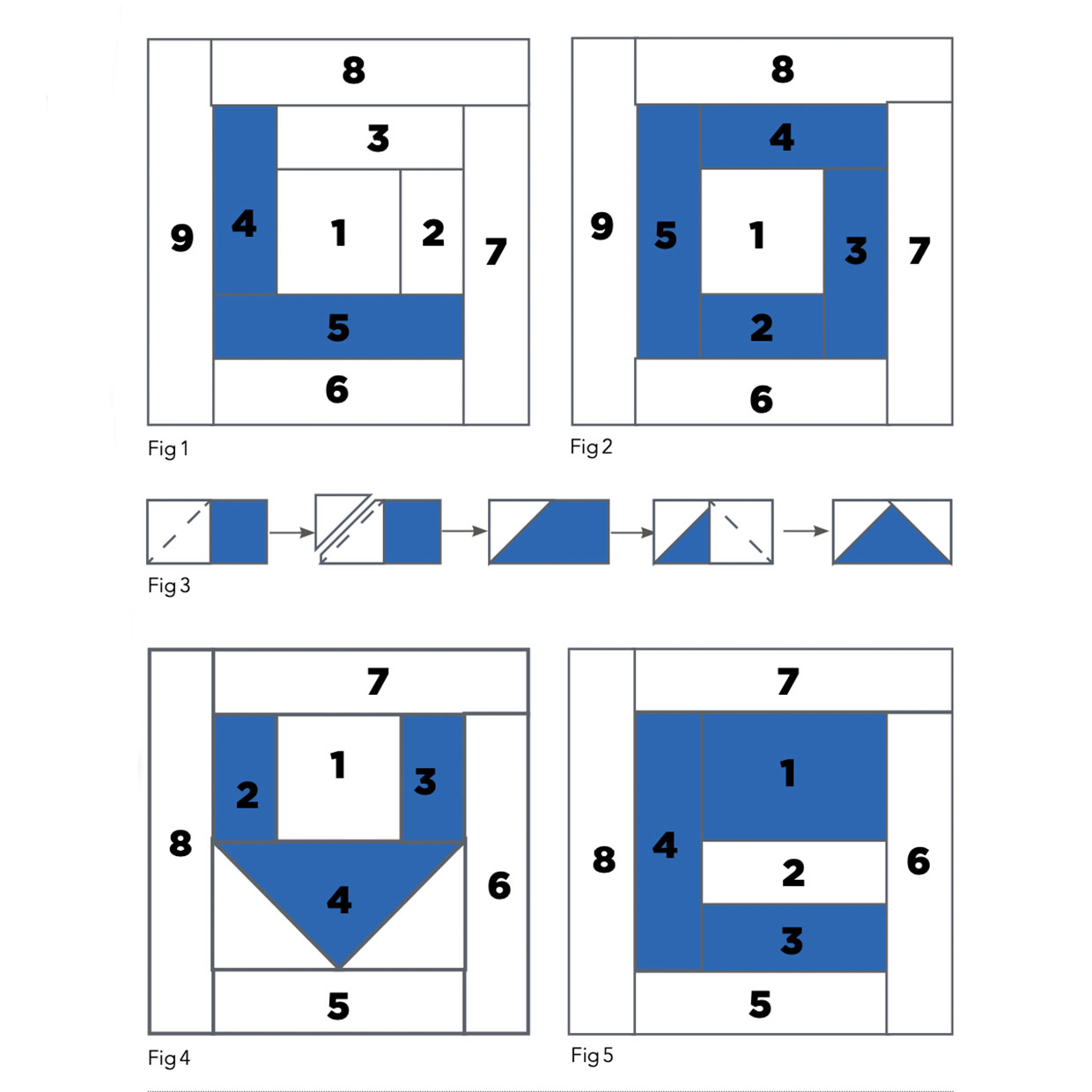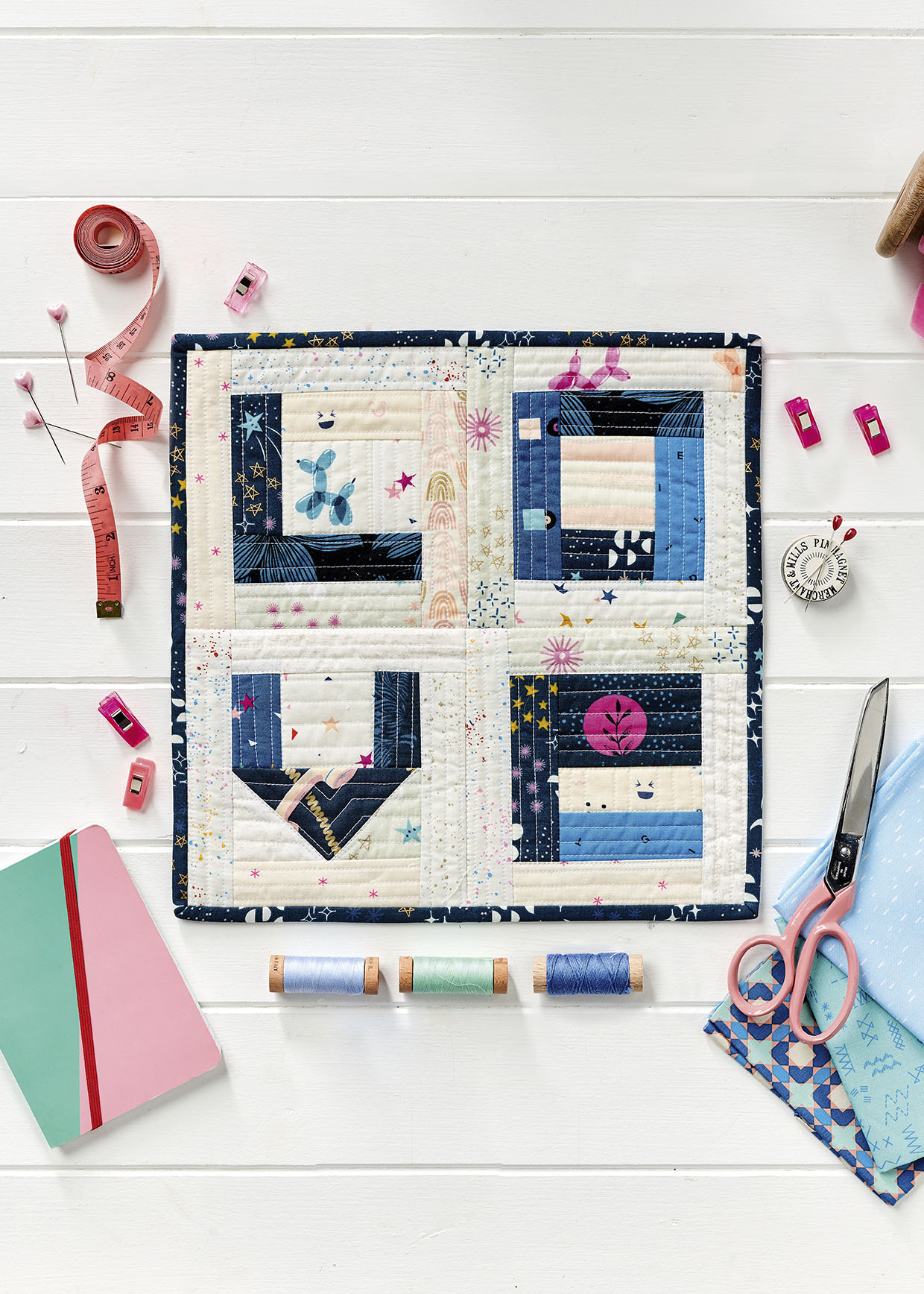Quilt as you go is a brilliant quilting technique to try if you want to quilt more sustainably. It’s a great way to use up fabric and wadding left over from other projects.
If you like to do things in small steps, quilt as you go may just be your new favourite technique. Stitch your quilting lines as you build up your design, using individual blocks and off cuts of wadding.
This is a fantastic method for beginners to try because you quilt your blocks before assembling them, making the task a lot easier. You don’t need a long-arm quilting machine to quilt as you go either – a standard domestic sewing machine is perfect for this technique.
And the best bit? Your loose threads will be lost in the seams too, so no thread ends to bury!
We’ve created a fabulous mini quilt design to help you get to grips with the quilt as you go technique, but first you’ll need to choose the right wadding for the job.
Choose the right wadding for your quilt from Vlieseline
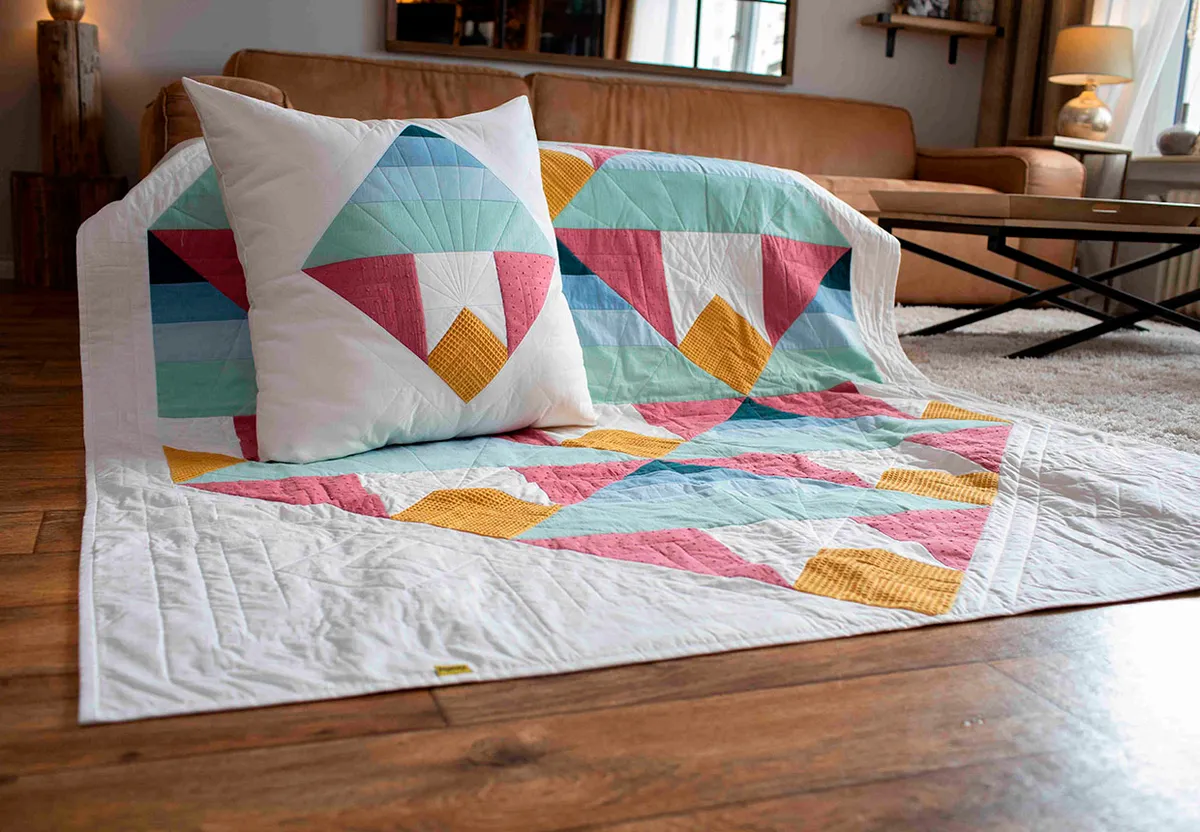
Wadding (or batting) is the filling that goes inside your quilt, forming a sandwich between the quilt top and the backing fabric. Adding wadding makes your finished quilt thick and cosy.
Wadding is sold in a variety of thicknesses and materials, so it’s worth doing your research to pick the correct kind of wadding for your project.
If you’re an experienced quilter, you’re likely to have encountered products from Vlieseline before. Vlieseline has a fantastic reputation for producing high-quality wadding and interlining options for all of your sewing and quilting projects.
They’re constantly reviewing their products to ensure they're as environmentally friendly as possible, making use of natural fibres such as wool and cotton.
The company is committed to reducing their carbon footprint and creating products that help crafters to make sustainable choices.
Their range includes waddings made from renewable raw fibres including bamboo and soya. These natural materials are breathable, have a high moisture absorption capacity and won’t build up a static charge.
Many of the waddings below include scrim to give your quilt more stability and support. The scrim is lightweight and all the waddings feel beautifully soft to the touch.
In addition to waddings, Vlieseline also offers a variety of useful aids for patchworking such as a quickscreen triangle, quickscreen square and quilter’s grid.
Here are some recommended Vlieseline waddings for your quilt as you go project:
Bamboo mix wadding
Bamboo is an incredibly sustainable material: it grows rapidly and the plant will regenerate after harvesting. It also requires less water and pesticides than other plants that are used to manufacture textiles.
Vlieseline’s bamboo mix wadding is naturally antibacterial, breathable and soft. It has a luxurious feel and a very smooth texture.
This wadding is made from 47% bamboo and 46% cotton with polypropylene scrim. It’s available in 244cm width.
Find out more about Vlieseline bamboo mix wadding.
Soya mix wadding
If you’re looking for super-soft, eco-friendly wadding then soya mix is a fantastic choice. Made with extremely soft natural fibres, soya mix wadding has a beautifully smooth finish. It feels more luxurious than most traditional waddings too! Soya fabric is sometimes called “vegetable cashmere” because of its silky texture.
This soya mix wadding is a blend of natural and synthetic fibres, combining the best qualities of both. It has the soft texture and moisture absorption of soya, while the synthetic fibres are anti-crease and help the material to dry more quickly.
Soya regrows quickly, making it a great material for sustainable fabrics.
Vlieseline’s soya mix wadding is made up of 50% soya and 50% cotton with polypropylene scrim. It’s available in widths of 152cm.
Learn more about Vlieseline soya mix wadding.
Cotton mix wadding
This high-quality cotton mix wadding from Vlieseline is made from 80% cotton, so you’ll get all of the comfort of cotton paired with the durability and stability of polyester.
Cotton is very breathable, making it the perfect wadding for your next quilting project! It also holds its shape well, so you don’t need to worry about fibre migration.
This wadding contains a high percentage of cotton (80%), blended with 20% polyester. It’s available in widths of 244cm and 300cm with a polypropylene scrim.
Discover Vlieseline’s cotton mix wadding.
100% bleached cotton wadding
When working with lighter fabrics it’s a good idea to choose a bleached wadding as this won’t show through the outer layers of fabric.
This 100% bleached sew-in cotton wadding has been specially designed for use with lighter coloured fabrics. It’s also lightweight, so this is an excellent choice if you don’t want your finished quilt to feel too bulky.
It’s available in a 244cm width with a polypropylene scrim.
Take a closer look at Vlieseline’s 100% bleached cotton wadding.
How to quilt as you go
Get the hang of the quilt as you go technique by making a simple Log Cabin block! From there we’ll show you how to stitch your blocks together.
Then you can put your new skills into practice by making a love mini quilt.

